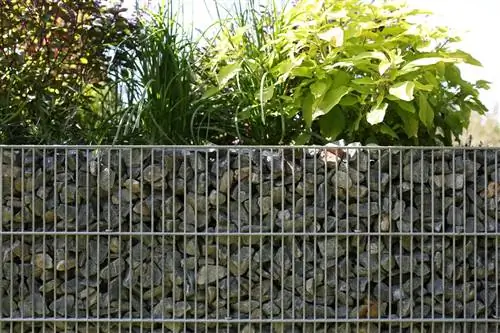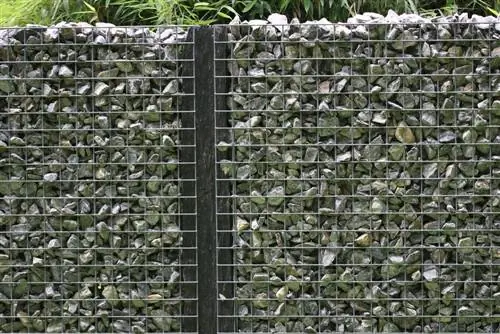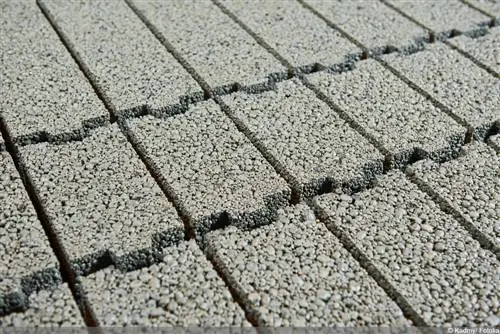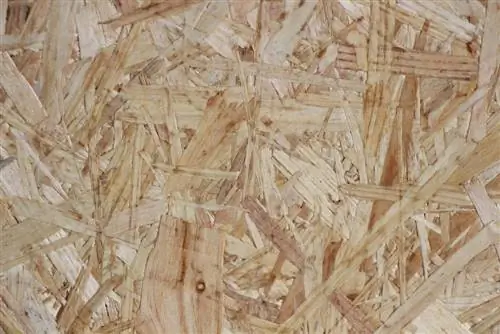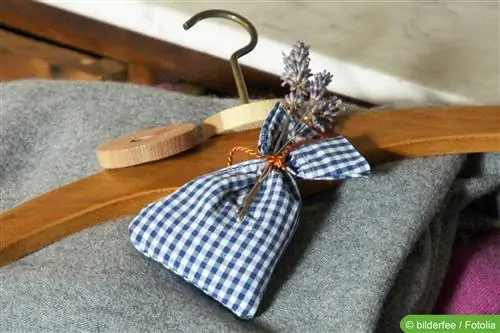- Author admin [email protected].
- Public 2024-01-07 19:19.
- Last modified 2025-01-24 12:45.
If you want to fill a gabion, planning is one of the most important points. There are numerous types of gabion stones and baskets available that must be coordinated with each other.
Select the correct mesh size
For stone filling, it is not just the height, width or length of the gabion that is crucial, but also the mesh size. It is an important point in planning so that the gabion stones do not fall through the mesh of the grid. The diameter of the stones must always be larger than the mesh of the wire baskets. For example, if you have chosen gravel, you should never use stones with a small grain size such as gravel 0/5, as in most cases there are no meshes that are close enough. Gabions are usually offered by various manufacturers in the following mesh sizes:
- 2.5 cm x 2.5 cm (mini version)
- 5cm x 5cm
- 5cm x 10cm
- 5cm x 20cm
- 10cm x 10cm
- 20cm x 30cm
Stones: Suitable Size
Fortunately, gabion stones are available in easy-to-understand sizes, which makes it much easier to choose the filling according to the mesh size. They are given as follows:
- individual stone size in mm or cm
- Grain size in mm
The size of the individual gabion stones usually refers to the diameter or the longest side. For example, if you choose Yellow Sun limestones, they are available in sizes such as 4 to 6 or even 15 to 30 centimeters. Since the dimensions of the smallest size range up to 6 centimeters, you must choose the mesh sizes 2.5 x 2.5 or 5 x 5, as the others are too large. With the largest version, however, you can choose almost any mesh size. Compared to stone size, grit is mostly used for types such as gravel or crushed stone as they are supplied in bulk.
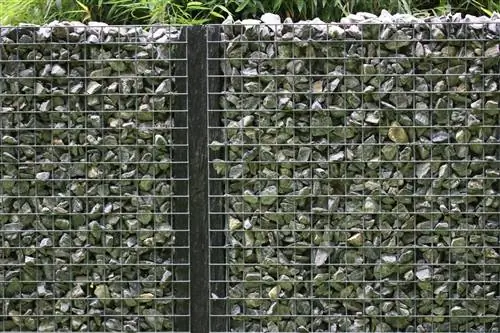
Natural stones therefore do not use this measurement. Grains use the notation smallest grain/largest grain to illustrate the range within which the size of the stones varies. Suitable grain sizes for gabion stones are:
- 5/45
- 40/80
- 70/100
- 60/120
- 60/140
Gabion stone variants
The filling material not only determines the selected mesh size, but also the weight of the filling. Based on the gabion stones you have selected, you can determine how much you need for the filling and what costs will be incurred, including delivery and filling, if you do not do this yourself. To do this, simply determine the volume of the gabions and the weight of the stoneware to determine the requirement in tons. Since filling is usually billed by building materials dealers in tons, this makes it easier for you to determine the costs. The selection of different stone types for your gabion has expanded significantly over the years and each offers different properties.
The following list introduces you to the individual types:
| Alpine stones(limestone mixture) |
easy care breakproof inhibits algae and moss growth |
| Bas alt |
pressureproof resilient frost and weather resistant |
| Feuerstein |
decorative heat-resistant |
| Glass chunks |
easy care color stable weatherproof |
| Gneiss |
Surface smooth or rough robust resilient |
| Granite |
robust weather and frost resistant resistant to road s alt |
| Limestone |
ideal for sunny, dry locations not color stable only a few species weather-resistant |
| Gravel |
available in numerous types Properties strongly depend on species |
| Quartz |
colorfast available in numerous types |
| Volcanites (solidified lava) |
fest weather and frost resistant sensitive to road s alt |
| Marble |
decorative not colorfast gets dirty more easily robust ideal for shaded areas |
| Porphyry |
abrasion-resistant resistant to road s alt frost-proof |
| Slate |
decorative not every species is frost resistant scratches easily |
| gravel |
cheap available in numerous versions |
| Tuff |
retains heat weather-resistant handy shape |
Keep in mind that many stone types have different colored types. Choose the option that is most appealing to you. When making your selection, don't forget the price per ton, otherwise it can quickly become expensive.
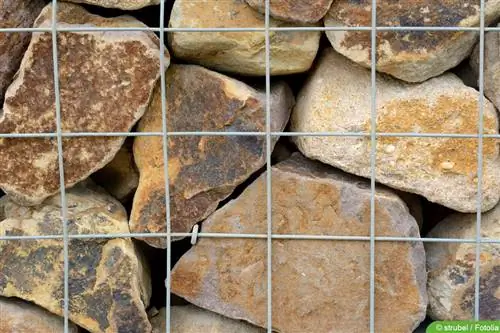
The following is a small comparison of different stone variants and the typical costs:
| gravel | 8 to 50 euros/t |
| Granite | 120 to 300 euros/t |
| Bas alt | 150 to 270 euros/t |
| Slate | 50 to 200 euros/t |
| Glass chunks | 1,000 to 2,000 euros/t |
Note:
The filling stones are rarely calculated per piece, sack or pallet. Be sure to compare the costs involved so that you don't pay too much.
Recommended wire sizes
Wire thickness is an often overlooked point when planning. This depends on certain factors so that the gabion is not damaged or falls over after filling. Bulging of the grilles is particularly problematic if the wire thickness is too small. The stronger the wire, the heavier the gabion, which is something you need to take into account when planning. Typical wire sizes include:
- 3mm
- 4mm
- 5mm
- more than 5 mm
Note:
With wire thicknesses over 5 millimeters, the weight of the gabion can be expected to increase by one to two thirds. Keep this point in mind while planning.
Wire sizes: intended uses
The available wire sizes are used for different purposes. The following is an overview of the typical wire sizes and their use:
| 3mm |
Fence alternatives Decorative element Seating |
| 4mm |
Noise protection gabions Gabion with bottom filling Privacy protection |
| 5mm |
Retaining walls high privacy protection Fasteners |
| over 5 mm | Heavy duty gabions |
Calculation
Wire thicknesses are selected according to the gabion height. Up to a height of two meters, the use of 3 or 4 millimeters is completely sufficient. From two meters onwards you definitely have to use 5 millimeters so that the gabions do not bend. You must also use this wire thickness when leveling difficult surfaces, as they require a concrete foundation due to their weight. In contrast, 3 or 4 millimeter wire thicknesses can increase the stability if you choose the right mesh size.
Suitable for this:
- 5cm x 5cm
- 5cm x 10cm
- 10cm x 10cm
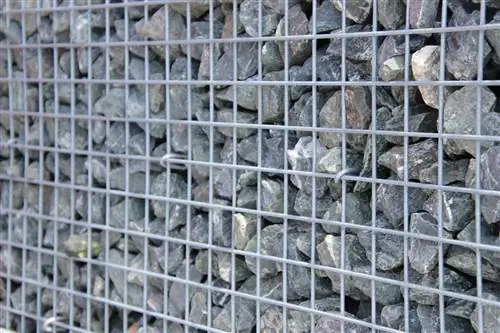
Tip:
When planning, don't forget the spacers, which are placed 20 to 30 centimeters apart in the basket grid. They ensure that the baskets do not change shape over time due to the weight of the stones.

